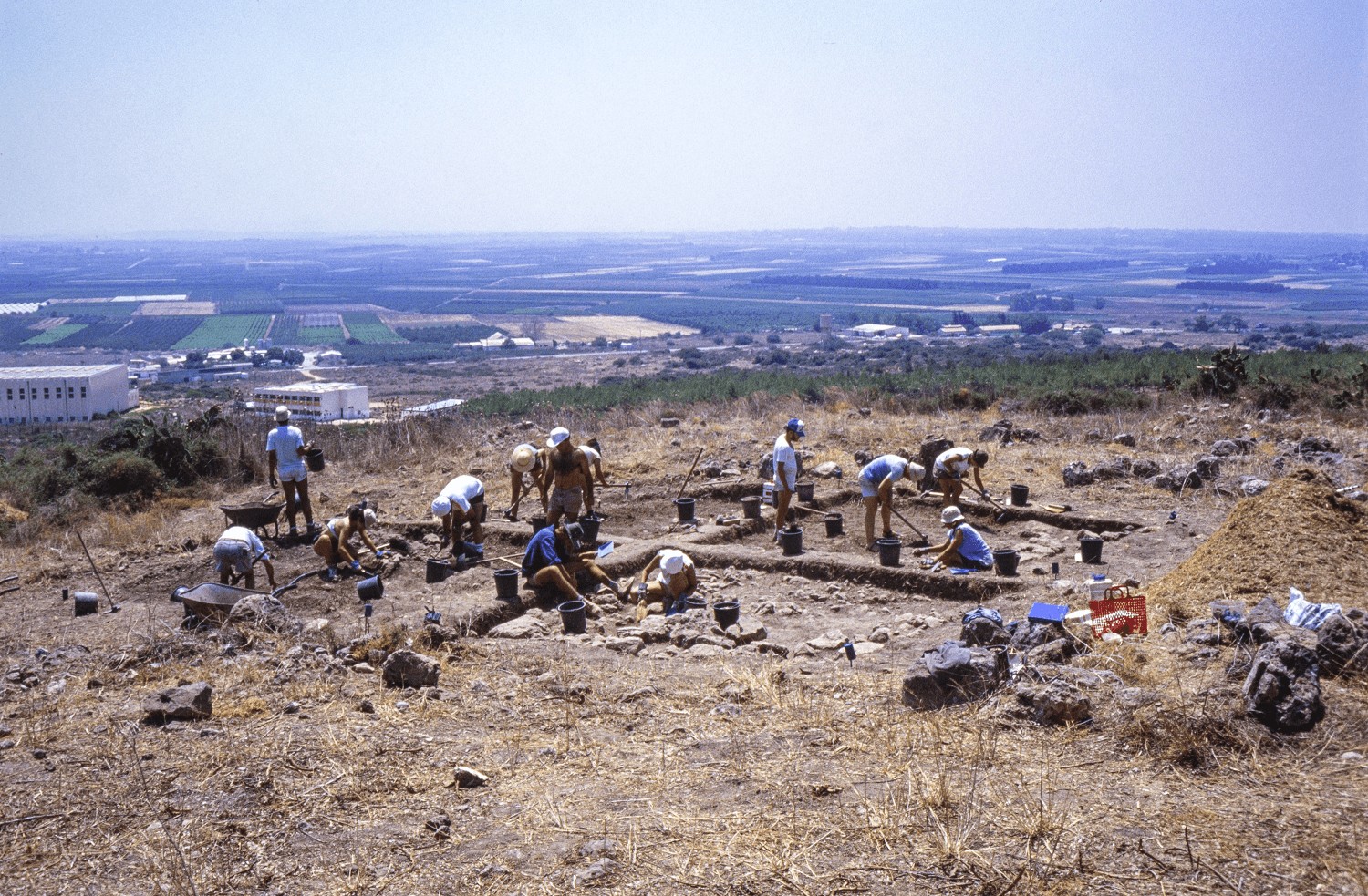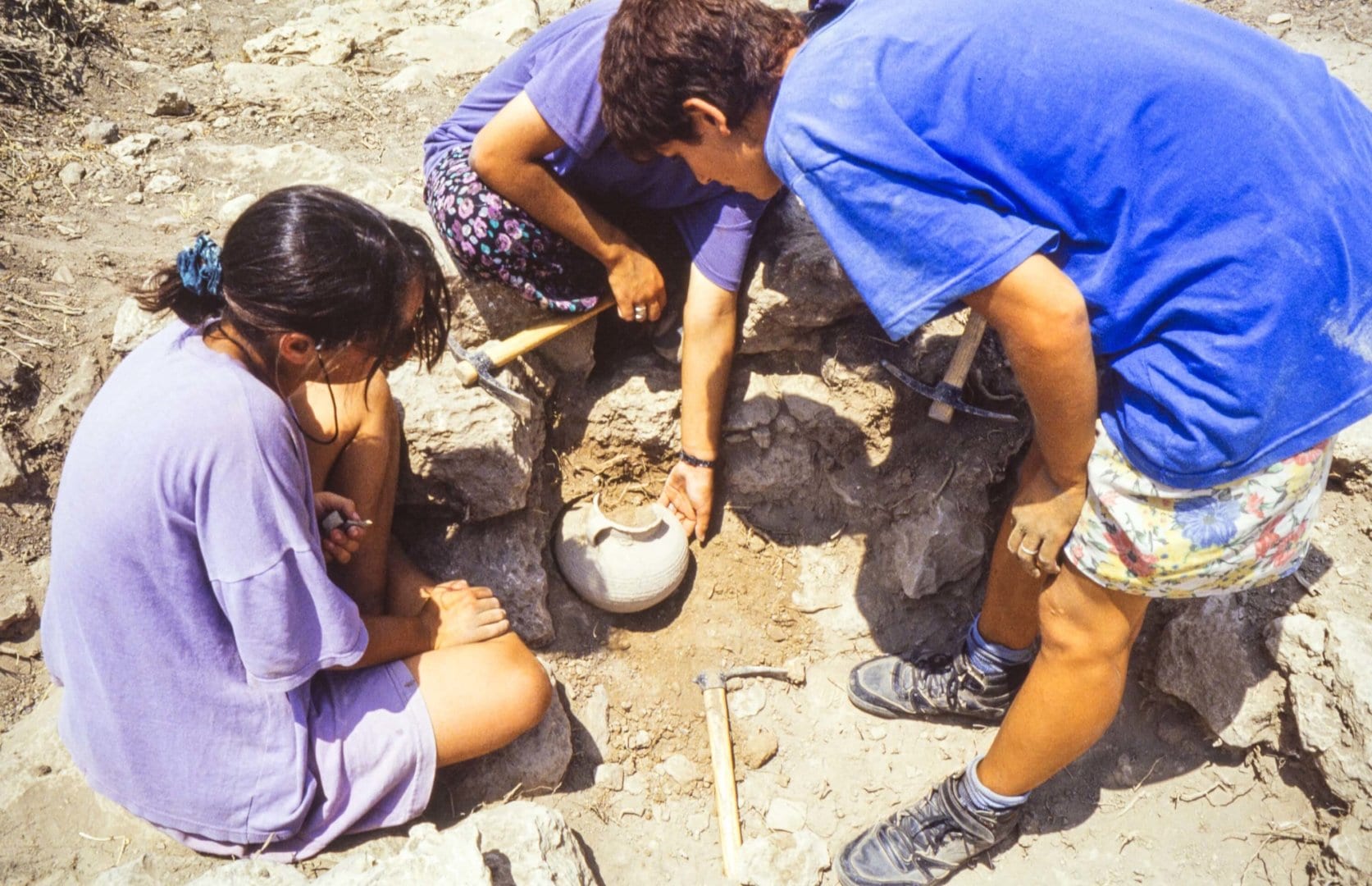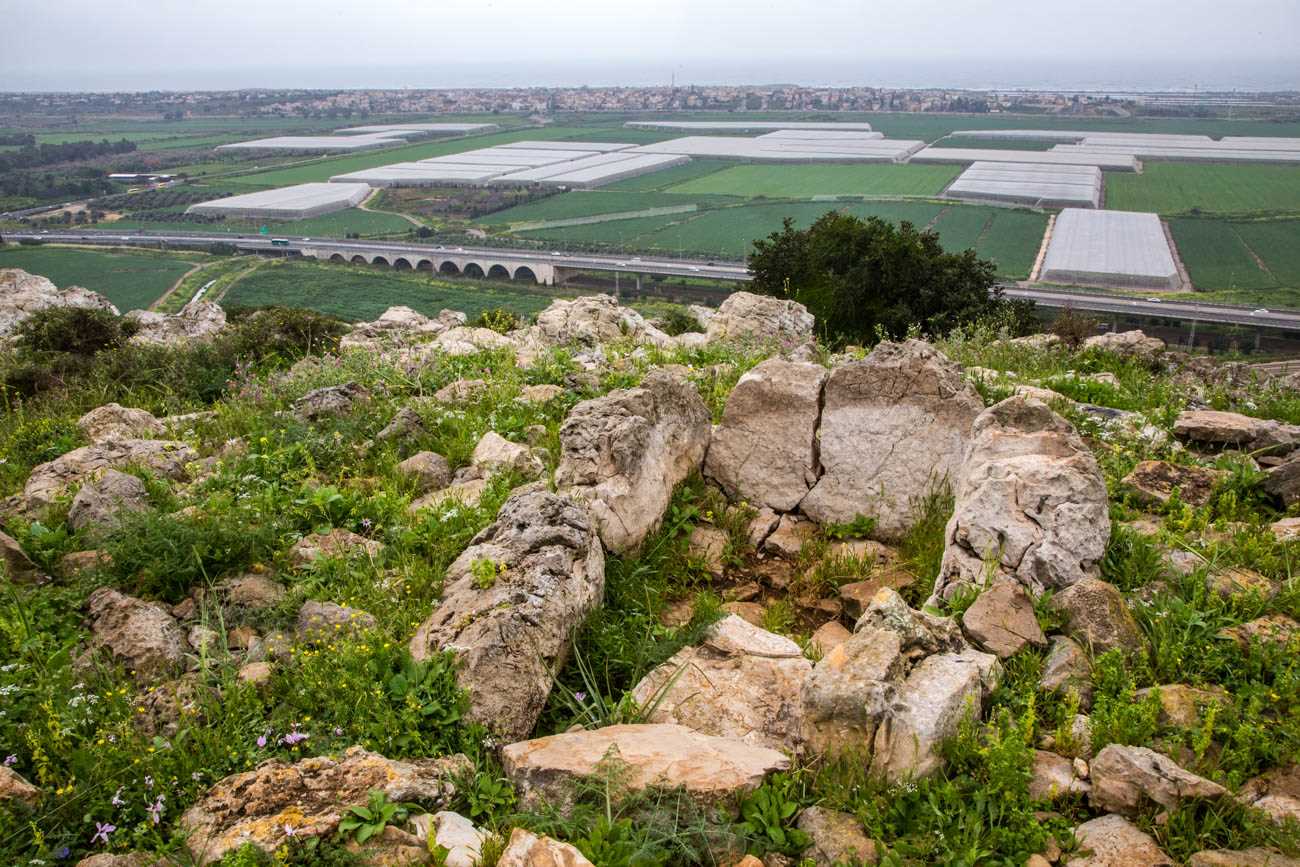Archaeological Sites at Ramat Hanadiv
Archaeological evidence of human activity in the area of Ramat Hanadiv is visible mostly around the tuff layers and near sources of water. The two main sites are Ein Tzur and Horvat Aqav
 News and Events
News and Events
Archaeological evidence of human activity in the area of Ramat Hanadiv is visible mostly around the tuff layers and near sources of water. The two main sites are Ein Tzur and Horvat Aqav

The two main sites are Ein Tzur and Horvat Aqav (horva meaning ruins in Arabic). The tuff is a nurturing layer into which the wells at Ein Tzur were dug and upon which agricultural plots were situated. Inhabitants of the ancient settlement of Horvat Eleg relied upon the nearby spring to create a system of aqueducts.
The following section summarizes the main archaeological sites at Ramat Hanadiv. All excavations between 1984 and 2006 were conducted by the late Prof. Yizhar Hirschfeld, the Park’s archaeologist.
Horvat Aqav
The site includes an agricultural manor, inhabited by the local Jewish population up to the second half of the first century B.C. and deserted, most likely, at the time of the Great Revolt against the Roman Empire (70 A.D.). Beginning in the Byzantine era in the 4th century and continuing until the
Arab occupation, the site was re-settled as a country villa. The remains of the villa, including the water system’s ruins were preserved and are open to the public.

Horvat Eleq
This site is situated at a strategic point, at the top of a hill overlooking the cultivated ‘Hanadiv’ Valley. A water tunnel with a spring flowing through it was found at the foot of the hill. Throughout the 20 seasons of excavations at the site, various findings were revealed, including specimens dating as early as the Bronze era. The most impressive findings are from the early Roman era: a wall, a tower and structures for processing agricultural produce. Some other findings indicate the existence of a settlement at this location during the Iron, Persian and Hellenist eras. During excavations, some ruins of Herodian origin were found. The findings included a large castle from King Herod’s time (37-4 B.C.). The castle was abandoned during the Jewish fight against the Romans. Other structures which were part of this impressive site were found on the slope of the hill.

The Tumuli Field
At the southern part of Ramat Hanadiv, remains of 40 round tumuli were found. The tumuli were used for burial purposes during the period between 3000 B.C. until the beginning of 2000 B.C. At the centre of each tumulus, a sarcophagus made of non-chiselled limestone plates (coffin/tomb) was found. Some of the tombs contained gifts, such as batons, daggers and jewellery
Kabara Cave
This karstic cave was the dwelling place of human beings tens of thousands of years ago. Since 1930, it has been the site of many archaeological excavations. The oldest finds, human bones and tools dating from the Mousterian culture, are more than 64,000 years old. One of the most thrilling discoveries from this period was the skeleton of a young Neanderthal man who was buried lying on his back, his arms across his
chest. This well-preserved skeleton provided material evidence regarding some controversial issues: the structure of its tongue bone, for instance, points clearly to the Neanderthals’ ability to pronounce consonants.
Groups of human beings lived here until some 10,000 years ago. The name of the cave lent itself to the Kabaric culture, a primitive human culture that existed from 10,000-20,000 years ago. Today the cave serves as the home of large fruit bats and various kinds of small insect-eating bats, whoser sonar calls can be heard from afar.
 ARCGIS ONLINE ARCGIS ONLINE |
Any question? We will be glad to help
The main entrance to the Memorial Gardens – located next to the Visitors Pavilion. In the entrance plaza are temporary exhibitions on a range of subjects promoted by Ramat Hanadiv
In 2015, Ramat Hanadiv established the Partnership for Regional Sustainability, aiming to combine forces for the quality of life in the region.
To complete your Ramat Hanadiv experience, you are cordially invited to enjoy the culinary pleasures of Mata’im, the cafe-restaurant on our premises.